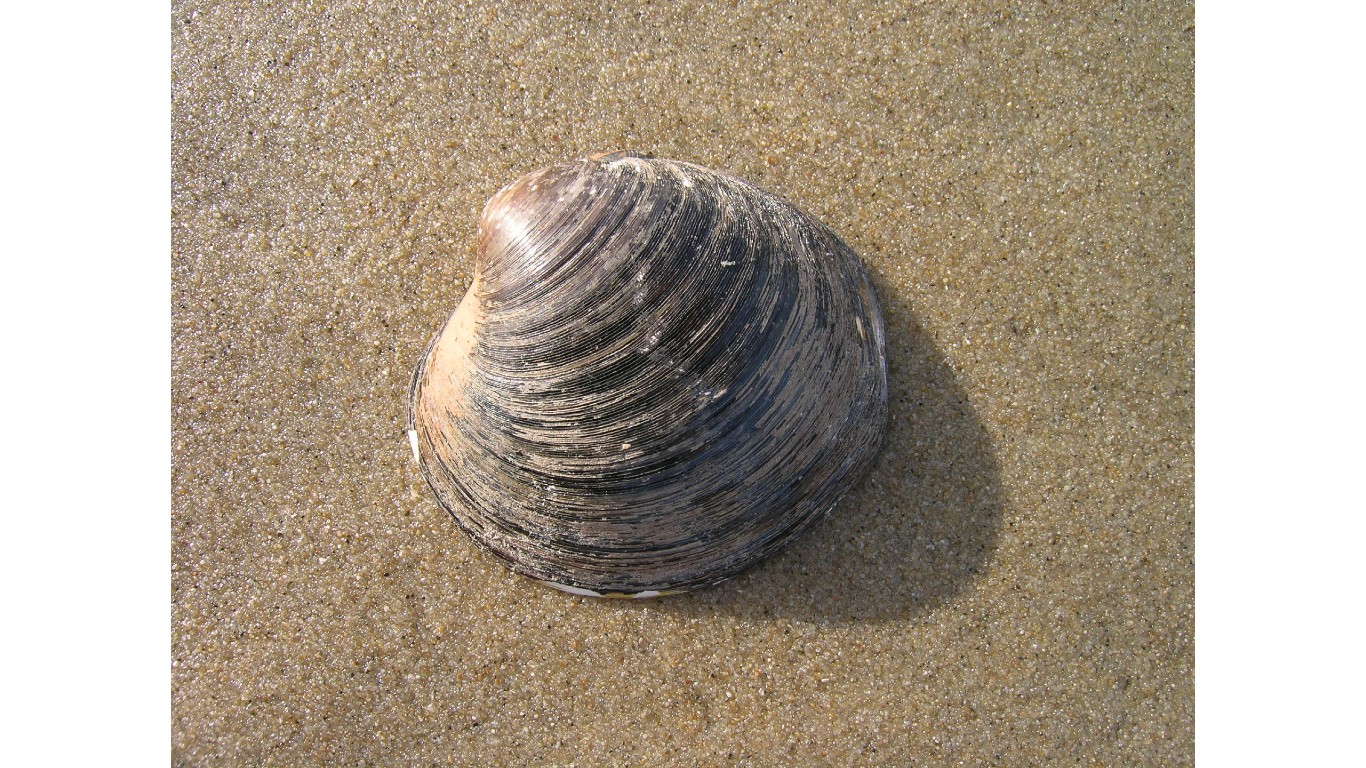
The lifespan of Americans has increased considerably over the last century. Lifespan at birth in 1920 was 53 years. That figure jumped to 79 years in 2020. Some people live much longer than that. The oldest American on record lived to be 119. But human lifespans are a fraction of those of some animals.
To find the longest living animal in the world, 24/7 Tempo reviewed data in the Human Ageing Genomic Resources database collection — specifically, the AnAge animal longevity database.
Cynthia Kenyon is a biochemist and geneticist working on unlocking the secrets of longevity. At a TED talk in Edinburgh, Scotland, eight years ago, she talked about aging. “There are some animals that don’t seem to age,” said Kenyon. “If you look at birds, which live a long time, cells from the birds tend to be more resistant to a lot of environmental stresses like high temperature, or hydrogen peroxide.”
About three-fourths of the species we considered are either fish or mammals like whales that live in the ocean. Size doesn’t appear to be a factor in how long animals live. Salamanders called olms that weigh less than an ounce can live as long as 102 years. The largest animal on Earth, the blue whale, can live to be up to 110 years. Despite its size, the blue whale is not among the most dangerous mammals on Earth.
To identify the longest living animal in the world, 24/7 Tempo reviewed animal aging and longevity data from AnAge, a curated database on animal history, genomes, and longevity records, that is part of the Human Ageing Genomic Resources (HAGR) suite of databases. The longest-living animals were identified by examining their maximum longevity, supplemented by our analysis of specimen, kingdom, and genus. Only organisms from the Kingdom Animalia were included. Animals from the phylum Porifera, such as sponges, were excluded. Average adult weight of each organism that were not provided by AnAge were confirmed by a variety of internet sources. Only animals considered to have an acceptable data quality or higher by AnAge were included.
The oldest living animal in the world is the Ocean quahog clam. Here are the details:
> Oldest recorded: 507 years
> Average adult weight: 0.5 lbs.
> Habitat: Northern Atlantic Ocean
Methodology: To identify the longest living animal in the world, 24/7 Tempo reviewed animal aging and longevity data from AnAge, a curated database on animal history, genomes, and longevity records, that is part of the Human Ageing Genomic Resources (HAGR) suite of databases. The longest-living animals were identified by examining their maximum longevity, supplemented by our analysis of specimen, kingdom, and genus. Only organisms from the Kingdom Animalia were included. Animals from the phylum Porifera, such as sponges, were excluded. Average adult weight of each organism that were not provided by AnAge were confirmed by a variety of internet sources. Only animals considered to have an acceptable data quality or higher by AnAge were included.
Click here to read The 50 Longest Living Animals In The World
The Average American Has No Idea How Much Money You Can Make Today (Sponsor)
The last few years made people forget how much banks and CD’s can pay. Meanwhile, interest rates have spiked and many can afford to pay you much more, but most are keeping yields low and hoping you won’t notice.
But there is good news. To win qualified customers, some accounts are paying almost 10x the national average! That’s an incredible way to keep your money safe and earn more at the same time. Our top pick for high yield savings accounts includes other benefits as well. You can earn up to 3.80% with a Checking & Savings Account today Sign up and get up to $300 with direct deposit. No account fees. FDIC Insured.
Click here to see how much more you could be earning on your savings today. It takes just a few minutes to open an account to make your money work for you.
Our top pick for high yield savings accounts includes other benefits as well. You can earn up to 4.00% with a Checking & Savings Account from Sofi. Sign up and get up to $300 with direct deposit. No account fees. FDIC Insured.
Thank you for reading! Have some feedback for us?
Contact the 24/7 Wall St. editorial team.





